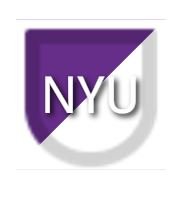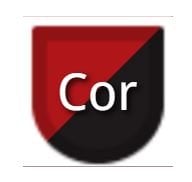Welcome back for the sixth in our series of posts offering analysis of the data we are receiving on MBA DecisionWire. MBA DecisionWire is a resource that allows candidates to share where they’ve decided to attend business school based on the offers they received.
If you have made your final decision in terms of where you will attend, please share on MBA DecisionWire. You can also use the filter options to see how other candidates have made their choices.
In this installment of our ongoing series, we’re exploring a New York/Metro-North theme by examining three schools in that region: NYU Stern School of Business, Yale School of Management (SOM) and Cornell University’s Johnson Graduate School of Management. Much like our last analysis, we’ll look at the other schools to which these schools’ admitted students also gained admission. The purpose of this analysis is to illustrate that you cannot really compare one school’s reported yield rate versus another’s without factoring in the other options candidates had when admitted to each school.
Let’s start by looking at one interesting element for Yale SOM and NYU Stern. It turns out that admitted students to these two schools often also had offers from the University of Pennsylvania’s Wharton School, Columbia Business School and Northwestern’s Kellogg School of Management. In short, there was a good deal of what we’ll call “cross-admit overlap” for these programs. Both schools’ admits were also admitted to other relatively comparable MBA programs in terms of quality and rankings.
The other schools where Stern admits also reported getting in included a cluster of schools known for finance (Columbia, Wharton, Chicago Booth), a cluster of top 15 schools (UCLA Anderson, Michigan Ross, UC-Berkeley Haas, Yale), a cluster of schools located in or near New York City (Columbia, Wharton, Yale) and a cluster of schools located in or near a big city (Anderson, Columbia, Chicago Booth, Kellogg).
Yale’s admits similarly included a finance cluster (Columbia, Stern, Wharton, Johnson) and a Top 15 cluster (Johnson, Duke’s Fuqua School, Stern), as well as a cluster of schools also located in New England (Johnson, Dartmouth’s Tuck School) and a cluster of schools known for their small/friendly student bodies (Tuck, Fuqua, Johnson, Kellogg).
The set of schools to which Johnson admits also reported gaining admission was slightly different. Johnson’s cross-admit schools included a Top 15 cluster (Yale, Darden, Ross, Fuqua), a Top 25 cluster (UNC Kenan Flagler, Texas McCombs, Georgetown McDonough), a small/friendly cluster (Kenan-Flagler, Fuqua, Darden, Tuck, McDonough, Ross) and a cluster of southern schools (Kenan-Flager, Fuqua, Darden, McCombs).
The yield rates on MBA DecisionWire for all three schools are comparable.
One final note of interest: For admits to each Yale SOM, NYU Stern and Johnson, only one in five (or between 21 and 22 percent) also reported admission to the next school most commonly reported by other applicants. In our previous analysis of Harvard Business School, Chicago Booth and Fuqua, the schools to which admits to those three schools were most often also admitted accounted for 33, 38 and 28 percent of the original schools’ admits respectively. What this helps illustrate is that some schools—such as HBS and Chicago Booth—have very clear peer groups resulting in extensive overlap in cross admits. In the cases of other schools, such as Johnson, Yale and Stern, there is less agreement around what represents a peer school and therefore less overlap in terms of where students to those schools also gain admission.
MBA DecisionWire Data Analysis:
 NYU Stern School of Business: 66 admits
NYU Stern School of Business: 66 admits
Where NYU Stern’s 66 admits also gained admission:
Yale: 14 (21 percent)
Wharton: 14 (21 percent)
Columbia: 11 (17 percent)
Chicago Booth: 9 (14 percent)
Ross: 6 (9 percent)
Haas: 6 (9 percent)
Kellogg: 6 (9 percent)
Anderson: 6 (9 percent)
 Yale School of Management: 64 admits
Yale School of Management: 64 admits
Where Yale SOM’s 64 admits also gained admission:
Stern: 14 (22 percent)
Columbia: 11 (17 percent)
Wharton: 11 (17 percent)
Kellogg: 9 (14 percent)
Fuqua: 9 (14 percent)
Tuck: 9 (14 percent)
Johnson: 8 (12 percent)
 Cornell’s Johnson Graduate School of Management: 65 admits
Cornell’s Johnson Graduate School of Management: 65 admits
Where Johnson’s 65 admits also gained admission:
Fuqua: 14 (22 percent)
Kenan-Flagler: 12 (18 percent)
Ross: 11 (17 percent)
Darden: 8 (12 percent)
Yale: 8 (12 percent)
McCombs: 8 (12 percent)
McDonough: 8 (12 percent)
Tuck: 8 (12 percent)






